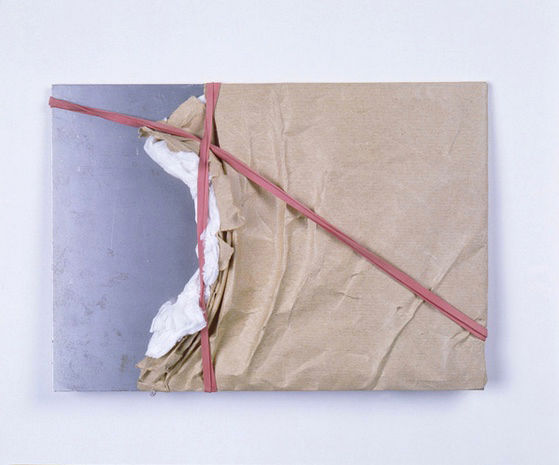The Movements of Geometry
by Peter Herbstreuth
When you begin to reflect on the reliefs by Irene Sauter the paradox becomes apparent. Painting and sculpture evoke an image which contradicts what the eye sees. The mounted reliefs resemble what the mind imagines. One sees a specific reality and thinks of something else. Why? These abstract – in the most literal sense of the word – works are on the threshold between painting and sculpture. With constructions which accentuate their components, their dynamics create a poetic metaphor, the ellipsis, the principle of reduction. Visually simply, logically complex.
The reliefs owe their hanging to the conventions of painting, their composition to the freedoms granted by abstract sculpture, their expressions to Sauter’s sensitivity for the unseeable. Reproductions of her work are deceptive, distuising not only their size and the nature of their surfaces, but also the feeling for distances they create. Her relief series have something to do with the movements of the observers, those who approach a relief from the side or the front, looking for the right vantage point, and those who simply look while walking by. Sauter’s work does not lend itself to reproduction. The shades of color become dull, the shine of the aluminium pales. In the distance the grain of the wood disappears, at close range its repetitive rhythm enlivens the whole.
In the series of 24 reliefs, Grobe Poesie, the dynamics are not created so much by the colors as the alternating and interrelated tensions arising between the different panels.
Although Grobe Poesie can be placed within the boundaries of Abstract Ecpressionism, due to its reduced nature and emphasis on materials it also tends in another direction. In this series, Sauter’s first after having given up painting, the stresses handwriting, the gesture of doing and consequently time. Grobe Poesie can be considered Sauter’s statement – whicht evolved from the work itself securely as a transitional form.
Grobe Poesie No 7 (Photo: A. Brunkhorst)
